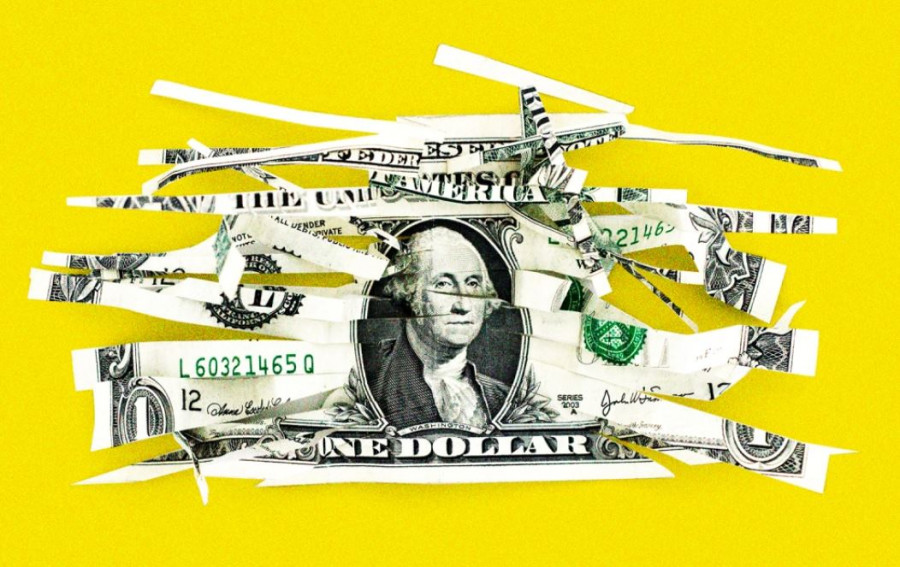Last week, the euro-dollar pair dropped by more than 150 pips (high—1.0529, low—1.0361) due to the overall strengthening of the U.S. dollar. However, on Monday, EUR/USD buyers tried to regain lost ground. Traders moved out of the 1.03 range, consolidated above 1.0400, and tested the 1.05 level. Several fundamental factors drive this price movement.
First, the market reacted positively to Chinese economic data released on Saturday. The PMI index for the manufacturing sector exceeded expectations, as did the non-manufacturing activity index—both indicators remained in the expansion zone. As risk appetite increased, the safe-haven dollar lost its appeal, leading to a drop in the U.S. Dollar Index (DXY) to the 106 level after a three-day rally last week.
Second, February's PMI indices for key EU countries were revised upward. Though the changes were minimal, they were still a positive signal. For instance, Germany's manufacturing PMI rose to 46.5 (initial estimate: 46.1). While this provided some symbolic support for the euro, the indices remained below 50, meaning the sector is still in contraction territory.
Third, the eurozone inflation report played a key role in EUR/USD's sharp rise, helping the pair recover almost all of last week's losses.
According to preliminary forecasts, the report was expected to show a slowdown in inflation for the first time in months. The data confirmed this, though not as sharply as anticipated. The headline Consumer Price Index (CPI) in February dropped to 2.4% year-on-year, while most analysts had predicted a decline to 2.3%. The index had shown an upward trend from October to January, but its growth finally stalled in February.
The core CPI, which excludes energy and food prices, had remained stable at 2.7% for five consecutive months. Forecasts predicted a slowdown to 2.5%, but it eased only slightly to 2.6%.
The report's structure indicates that the decline in overall inflation was mainly driven by lower service-sector inflation, which dropped to 3.7% in February (3.9% in January)—its lowest level in ten months. Energy prices also decreased slightly (-0.2%). However, food prices surged by 3.1% (up from 1.4% in January), and industrial goods prices increased by 0.6% (0.5% in January).
Despite the "inflation report's green tint"," it is unlikely to provide long-term support for the euro—even in the medium term. Inflation has indeed slowed, even if not as much as expected. More importantly, service-sector inflation has significantly declined. If this trend continues, the core CPI could fall to 2% or lower this year.
This suggests that the European Central Bank will likely cut interest rates by 25 basis points at its March meeting (results to be announced on Thursday, March 6) and adopt a dovish stance, signaling further rate reductions.
Despite this, EUR/USD traders have largely ignored the details of the inflation report, pushing the pair toward the 1.05 level.
Other fundamental factors contributed to Monday's rally. U.S. Commerce Secretary Howard Lutnick stated that the 25% tariffs on Mexican and Canadian goods could be revised downward by the U.S. President. According to Lutnick, both countries have made substantial progress in securing their borders with the United States—one of Trump's key demands.
This statement from the U.S. Treasury Secretary fueled risk appetite in the markets, while the safe-haven dollar remained under pressure.
Additionally, the ISM Manufacturing Index released on Monday added further pressure on the dollar, coming in below expectations. While the indicator remained in expansion territory (above 50), it declined for the first time in three months, dropping to 50.3 (forecast: 50.6).
However, opening long positions on EUR/USD remains risky. First, the CPI report confirmed that inflation is slowing (especially in the services sector). Second, the ISM Manufacturing Index is still above 50, meaning the U.S. economy remains growing despite the decline. Finally, Trump's tariff policy remains uncertain—more clarity is expected on March 4, when the U.S. President delivers the State of the Union address to Congress.
Due to the significant uncertainty and unstable foundations of the EUR/USD rally, it is recommended to take a wait-and-see approach. For a bullish trend to be confirmed, EUR/USD buyers must maintain a position above 1.0540, which aligns with the upper Bollinger Band on the daily (D1) timeframe. However, they are currently struggling to overcome the 1.0500 resistance level, represented by the middle Bollinger Band on the weekly (W1) timeframe.






















